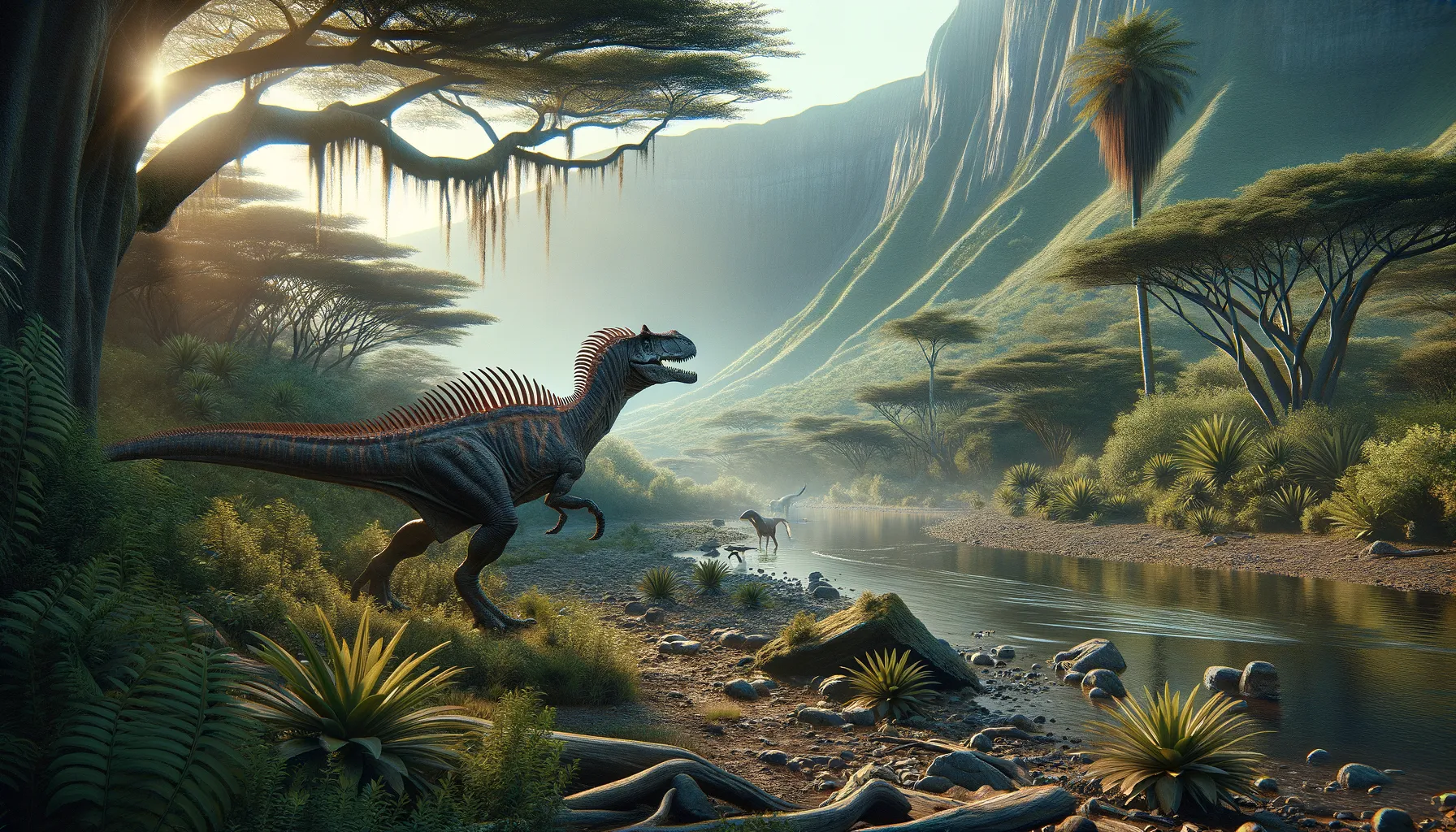
Cristatusaurus
Fierce hunter of early Cretaceous waters!
Period
Cretaceous
Length
Estimated length of 6 to 8 meters.
Height
Stood about 2 meters at the hips.
Weight
Approximately 500 to 700 kilograms.
Cristatusaurus was a theropod dinosaur thought to roam the region now known as Africa during the early Cretaceous period. This dinosaur had close ties with the spinosaurids, indicated by the elongated neural spines on its back. Its partial remains give insight into its hunting strategies, possibly involving stalking prey along riverbanks. Much of its biology remains a mystery, awaiting further fossil discoveries to clarify its life and habits.
Diet
Cristatusaurus was likely a carnivore, feeding on fish and possibly small to medium-sized land animals. Its diet would have been supplemented by scavenging, making use of its sharp teeth and strong jaws.
Hunting
It is believed that Cristatusaurus hunted by stalking prey along riverbanks, using stealth to capture fish and small terrestrial animals. Its semi-aquatic lifestyle suggests it was adept in both land and water, utilizing its crocodile-like snout.
Environmental challenges
Surviving in a habitat with fluctuating water levels would have pushed Cristatusaurus to adapt to both aquatic and terrestrial domains. Changes in climate and vegetation would also affect its hunting grounds and prey availability. Competition with other predators like larger theropods might have posed additional challenges, necessitating evolved hunting tactics.
Speed
Moderate walkers, faster in short bursts.
Lifespan
Estimated around 25 to 30 years.
First discovery
First fossils found in Africa in 1998.
Fun Facts
- Cristatusaurus was a meat-eating dinosaur that lived during the Early Cretaceous period.
- Its name, Cristatusaurus, means 'crested lizard' because of the potential crest on its head.
- Fossils of Cristatusaurus have been found in what is now Niger, Africa.
- Cristatusaurus is believed to be related to Spinosaurus, sharing some similar features like elongated spines.
- This dinosaur is estimated to have been around 6 to 7 meters long, making it a medium-sized theropod.
- While not much is known about its exact appearance, it might have had a crocodile-like snout, similar to other spinosaurids.
- Cristatusaurus is part of a group of dinosaurs known for their distinctive sail-like structures along their backs.
Growth and Development
Cristatusaurus would have grown rapidly in its juvenile years, driven by the need to reach a size that deterred potential predators. Like many dinosaurs, it might have relied on robust parental instincts to shield its young from threats. Its skeletal structure suggests adaptations for a blend of land and water, focusing growth on balanced development.
Habitat
Cristatusaurus lived in what was likely a semi-aquatic environment, rich in river systems and lush greenery. It inhabited regions that had ample water resources, supporting a diet rich in fish and providing shelter. These areas afforded it both terrestrial and aquatic hunting opportunities, a key for its survival.
Interaction with other species
As a mid-sized theropod, Cristatusaurus likely had to coexist with other carnivorous dinosaurs, requiring it to assert itself over scraps of food or territories. It may have clashed with other predators over resources, adapting its feeding strategies accordingly. Its social interactions could include loose associations with other individuals, often focused on mating or cooperative hunting.
Natural lifespan
Cristatusaurus likely lived for approximately 25 to 30 years.
Reproduction
Cristatusaurus probably employed a reproductive strategy similar to other theropods, laying eggs in nests. It possibly exhibited some form of nest guarding or parental care to maximize offspring survival. Seasonal mating patterns may have been influenced by environmental factors, ensuring young hatched during warmer months.
Social behaviour
It might have exhibited solitary or loosely aggregative behaviors, especially during the breeding season. While primarily solitary in hunting, temporary group associations could occur for mutual benefit. Competitive interactions could arise in shared territories or resources, driving solitary behaviors in hunting.
Fossil locations
Fossils of Cristatusaurus have been found primarily in the Elrhaz Formation of Niger, Africa. These findings have provided crucial insights into its anatomical structure and lifestyle. Ongoing excavations in similar strata continue to uncover more about this enigmatic creature.
